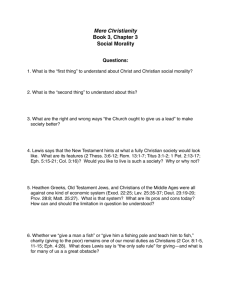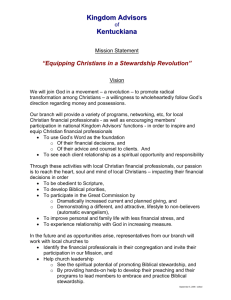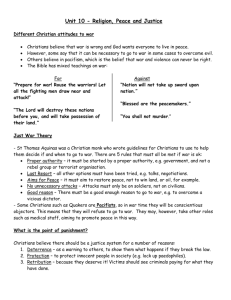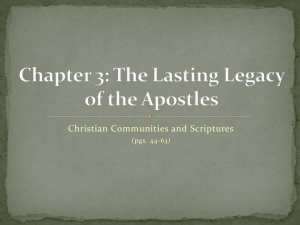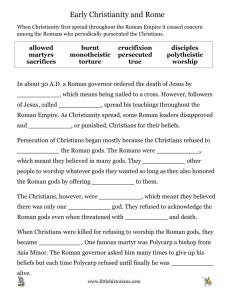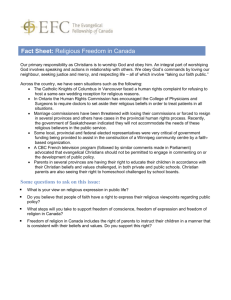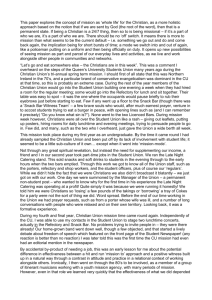Early Roman History
advertisement
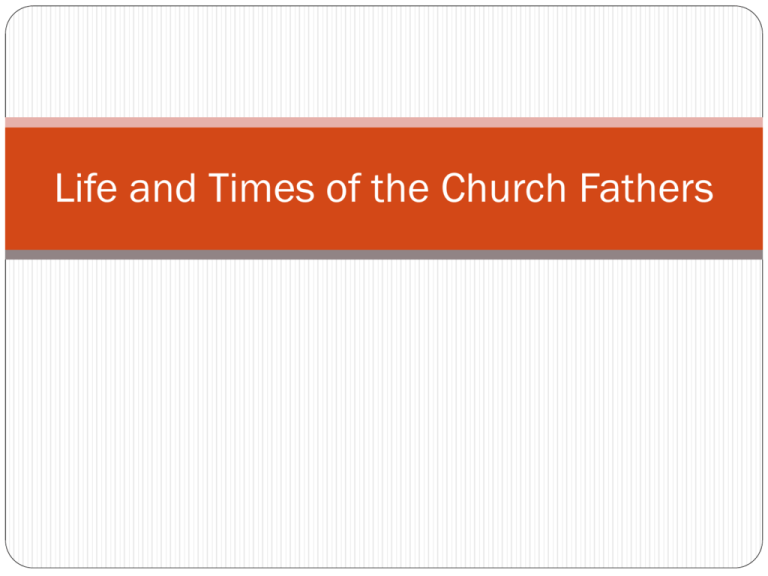
Life and Times of the Church Fathers Roman Empire in 30 BC Interactive Map – Cool! http://www.timemaps.com/history/europe-30bc Christians a Threat to Roman Empire The Roman Empire viewed Christians as a threat because they did not worship the roman gods, they refused to participate in military activity (prior to 313 AD), and met in secret. The Roman government feared what the Christians did in their secret meetings. They also saw Christians as a political threat since they did not give full allegiance to the Emperor by worshiping him. Christian Persecution Because of the threats that Christians posed, the Roman emperor did not hesitate to execute Christians. In a letter between Pliny the governor of Pontus (in Asia Minor) and the Emperor, the Emperor advises Pliny to execute Christians when they are caught, but not to go looking for Christians. To see the letters, visit: http://www.fordham.edu/halsall/ancient/pliny-trajan1.asp Christian Martyrs – Perpetua and Felicity The Church Fathers, while adding to the theology of the Church were not the only “witnesses” to the faith. Common women and men also witnessed to the faith. Perpetua and Felicity were two Christians martyred for their faith in 203 AD. Their story of imprisonment and execution was recorded and preserved. Other Christians circulated the stories of martyrs and honored their witness of faith. Christian Communities in Roman Empire Christian communities formed when Apostles or other disciples evangelized their towns and provinces. Paul gives us the best view of these communities in his letters. He wrote to those places that he helped to establish churches. These early communities relied on Oral Tradition to communicate the story of Jesus before the Gospels were actually written down. The first Gospel was written in… Worship Spaces Early Christians did not worship in public since it was illegal to be a Christian. As a result they worshipped in the secrecy of their own homes. Often singing hymns, offering prayers, and then sharing a meal together. Christians began devoting buildings as churches after 313 AD, when Constatine made Christianity legal. Not just the Church Fathers writing After Jesus’ death and resurrection, many of his followers were trying to make sense of his life, death, and resurrection. Not all of these writers and theologians were on the right track, however. There were heretic texts circulating about Jesus and the Christian faith. Many of the Church Fathers wrote in response to these these heresies and texts. It was also their job to determine which of these texts were inspired by the Holy Spirit and which were not. Relationship Between Jews and Christians Council of Jerusalem: Described in Acts 15 as the debate between Peter and Paul about whether or not gentiles must first become Jewish before becoming Christian. The Council decided that….? This decision marked a distinction between Judaism and Christianity. Christianity was becoming its own entity. The council occurred in approximately 50 AD. A Sad Year for Jerusalem In 70 AD the Roman Empire ransacked Jerusalem and destroyed the Temple. The Jewish people once again had to leave Jerusalem and no longer had a center of worship.
